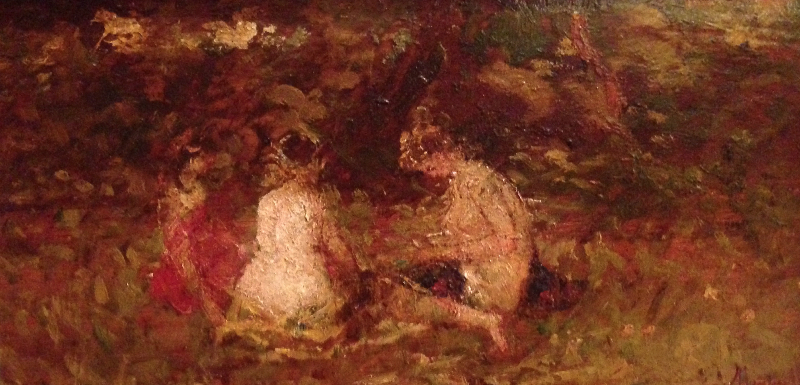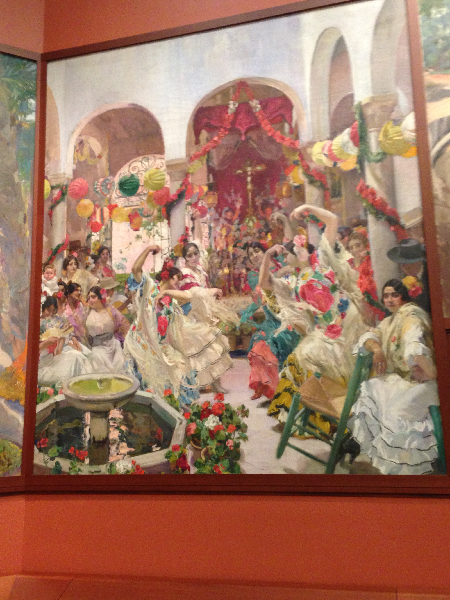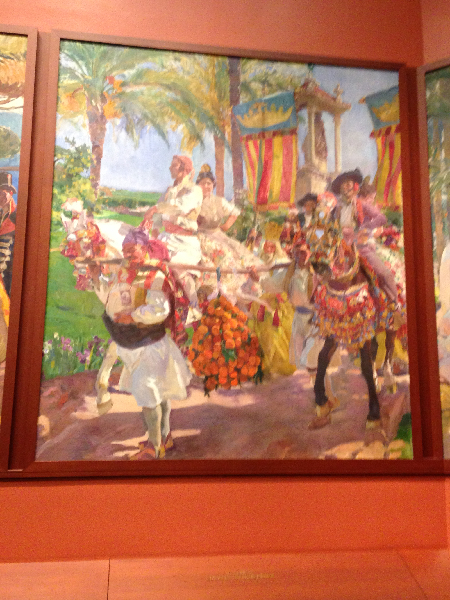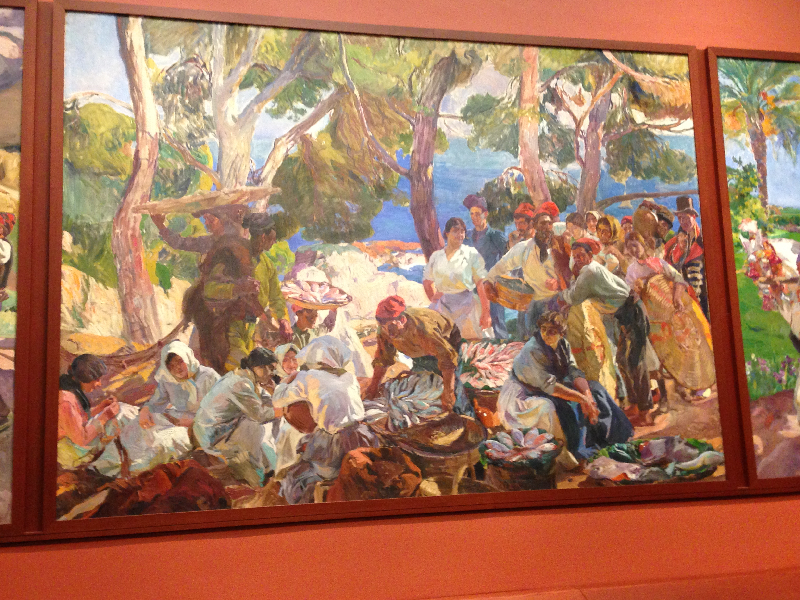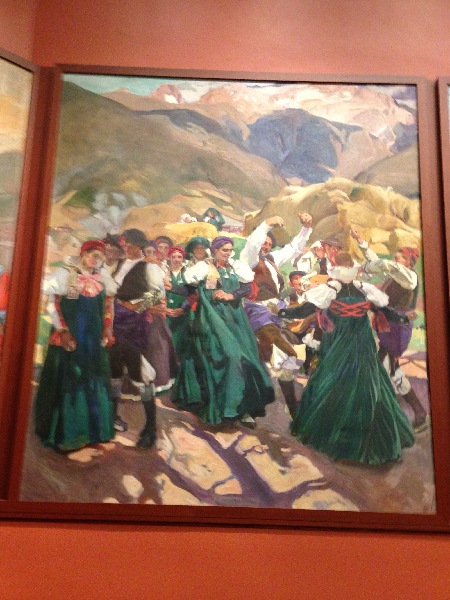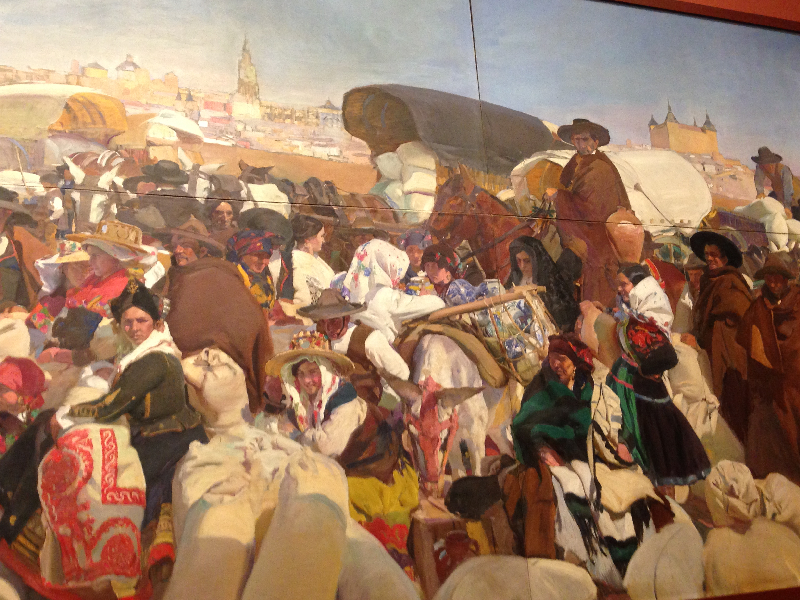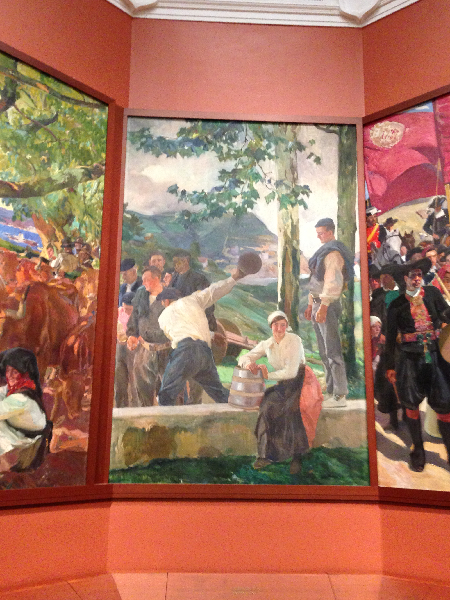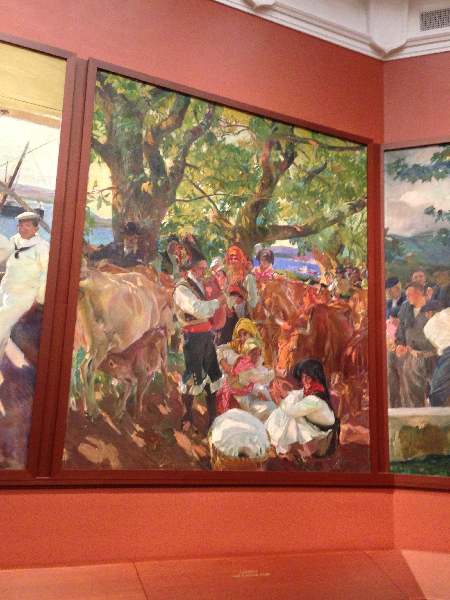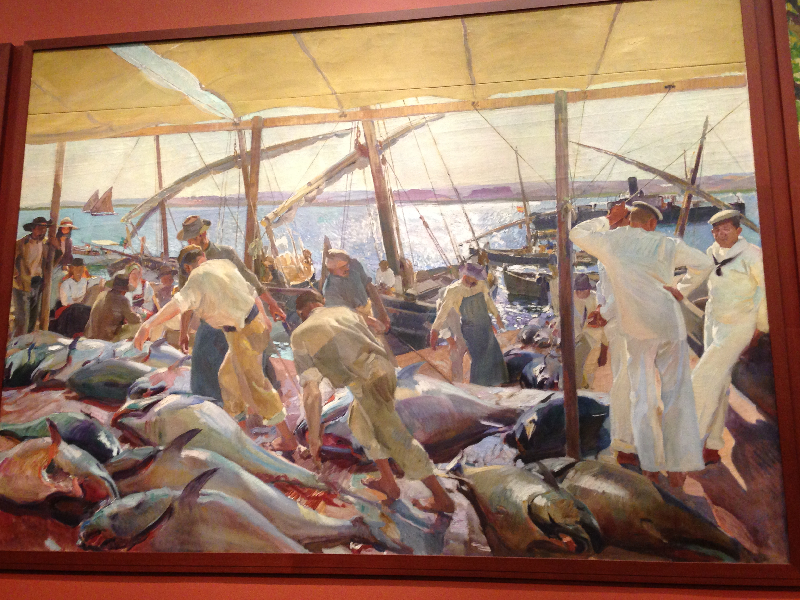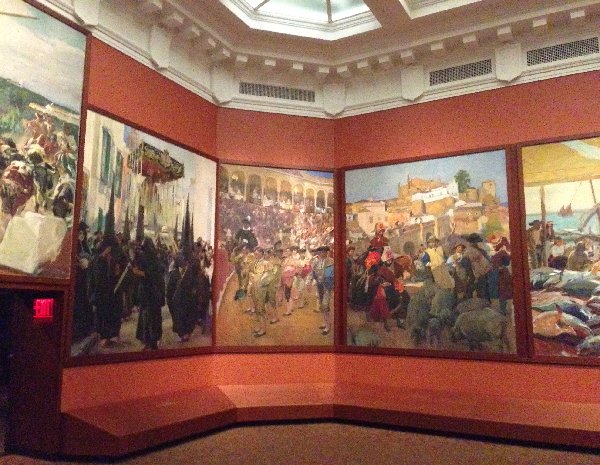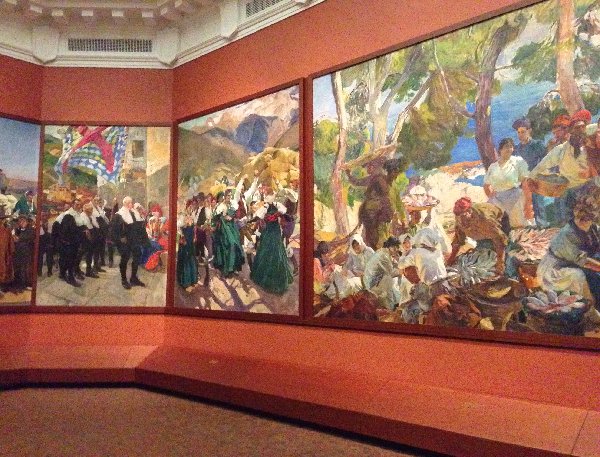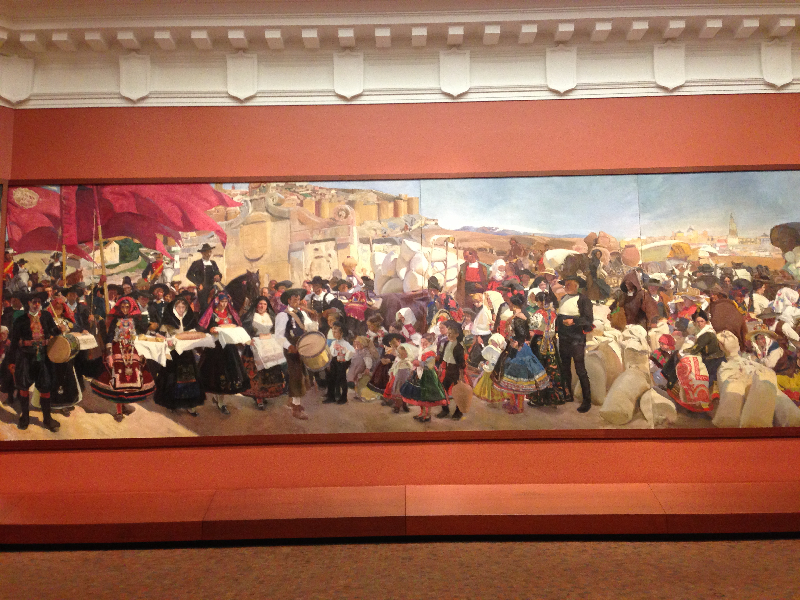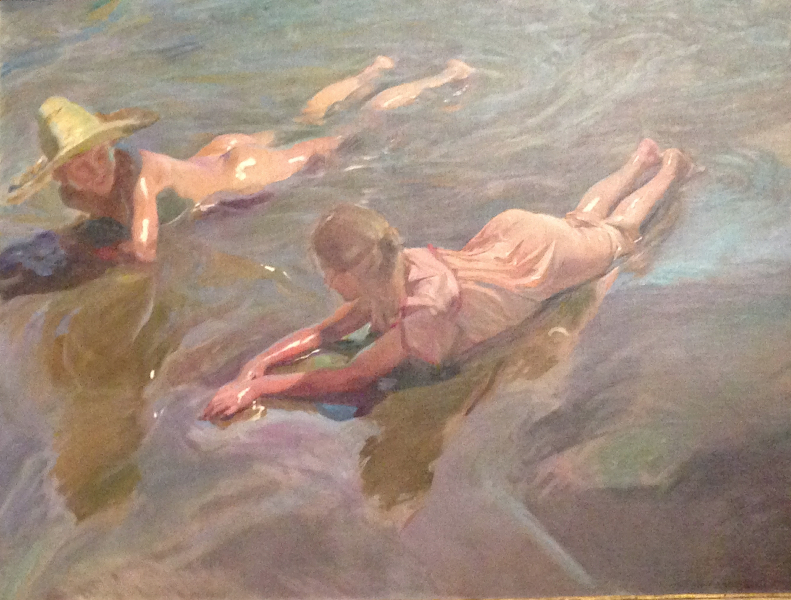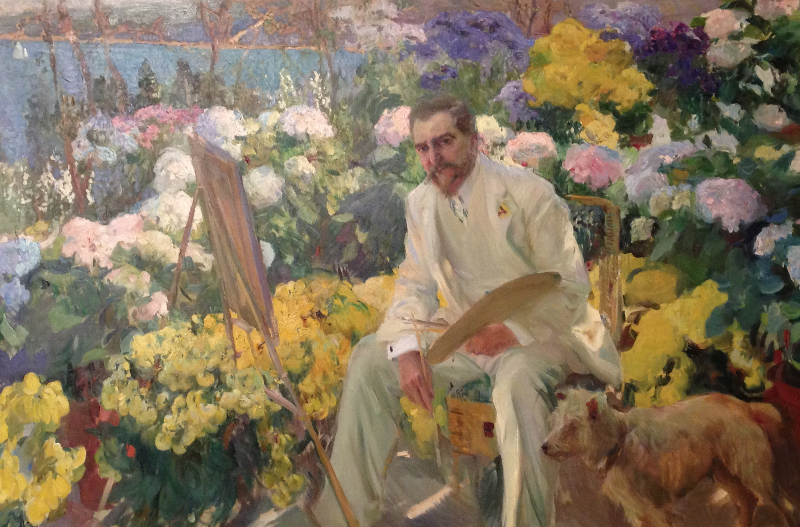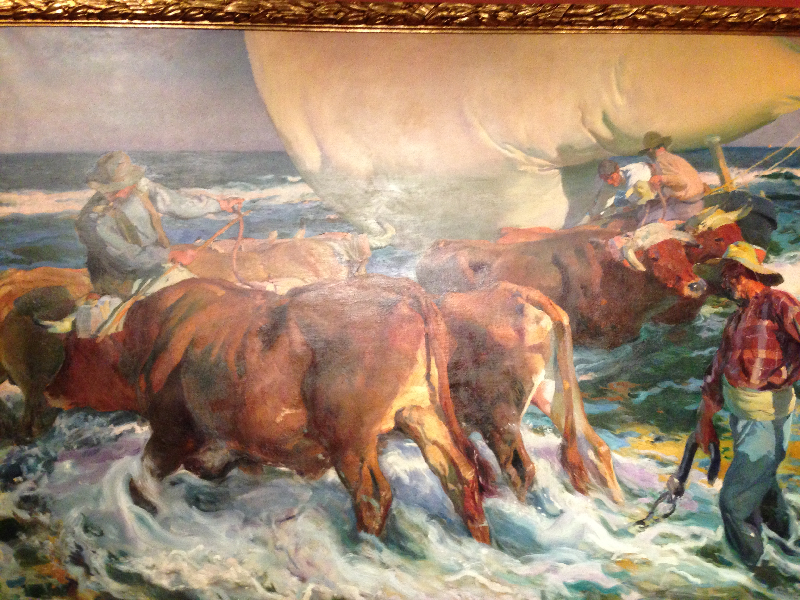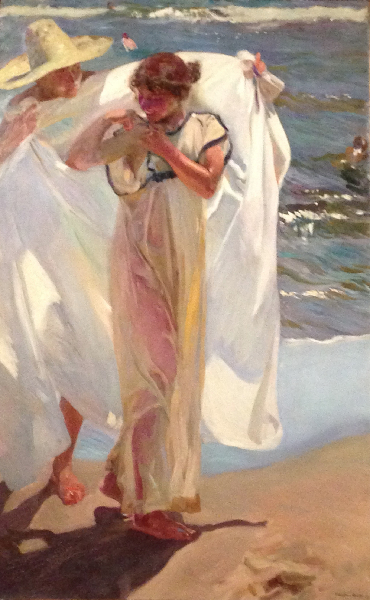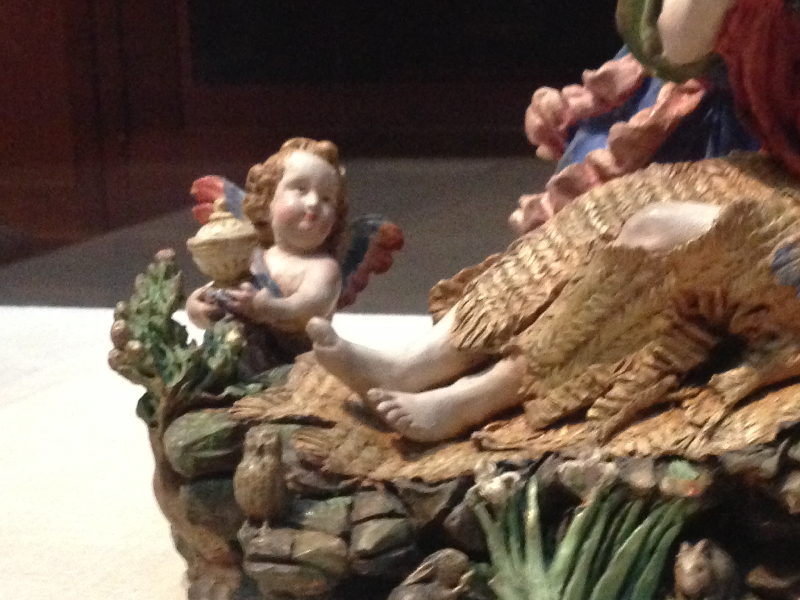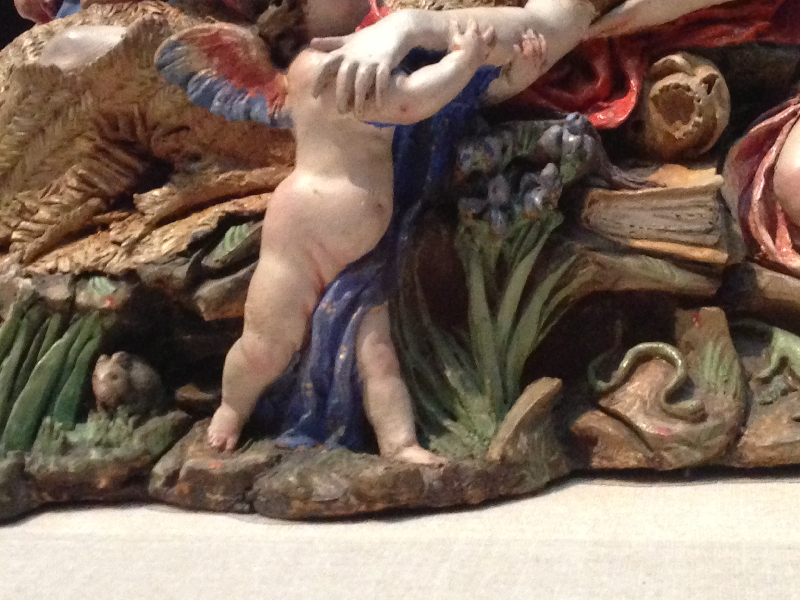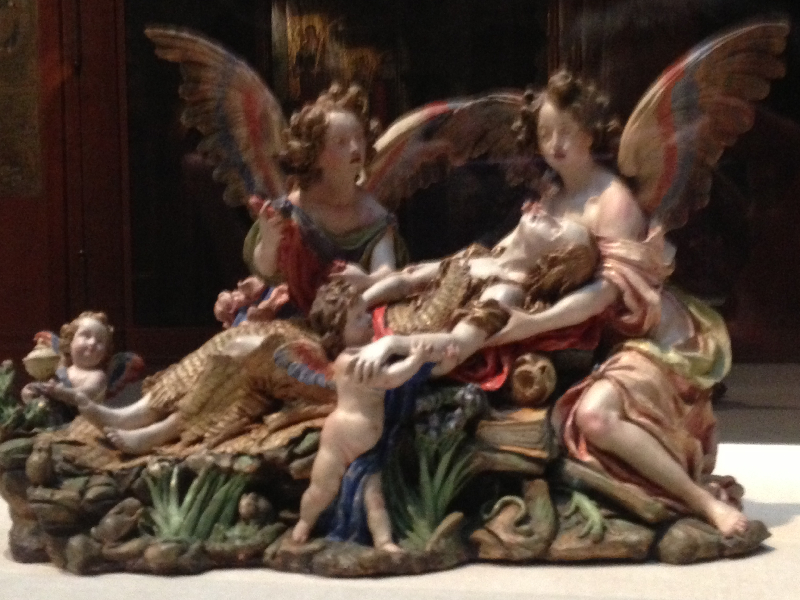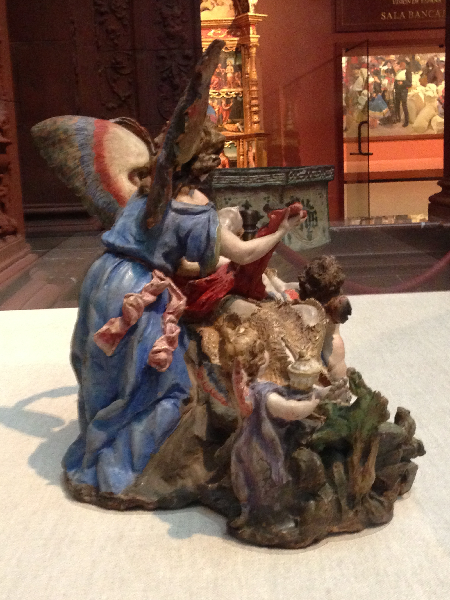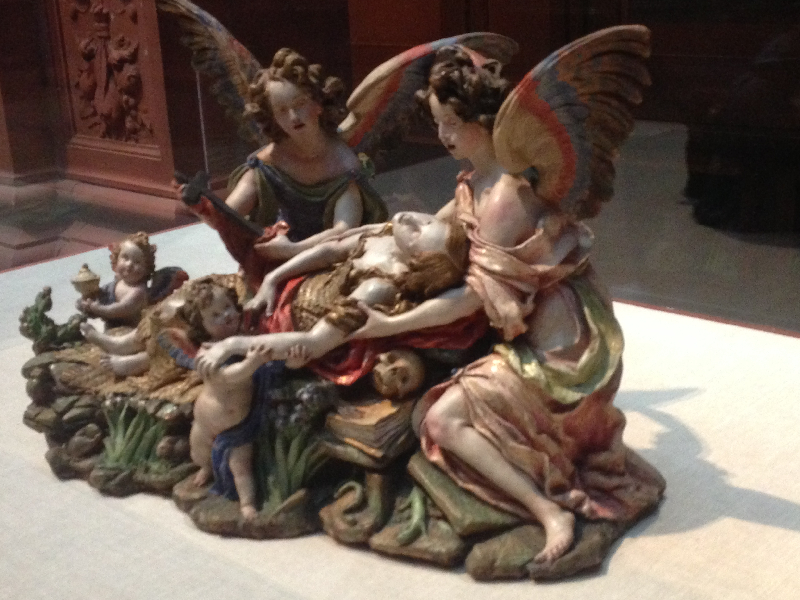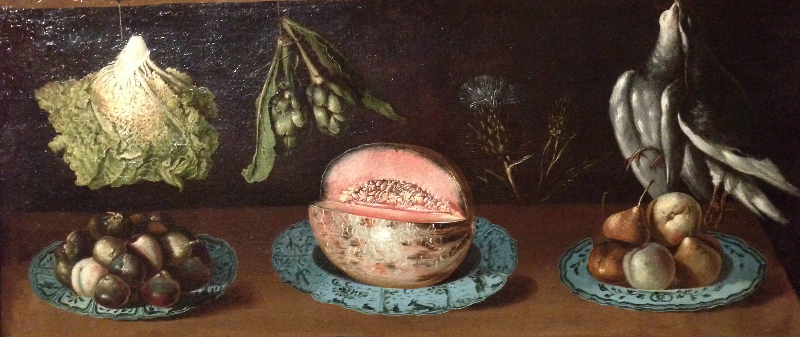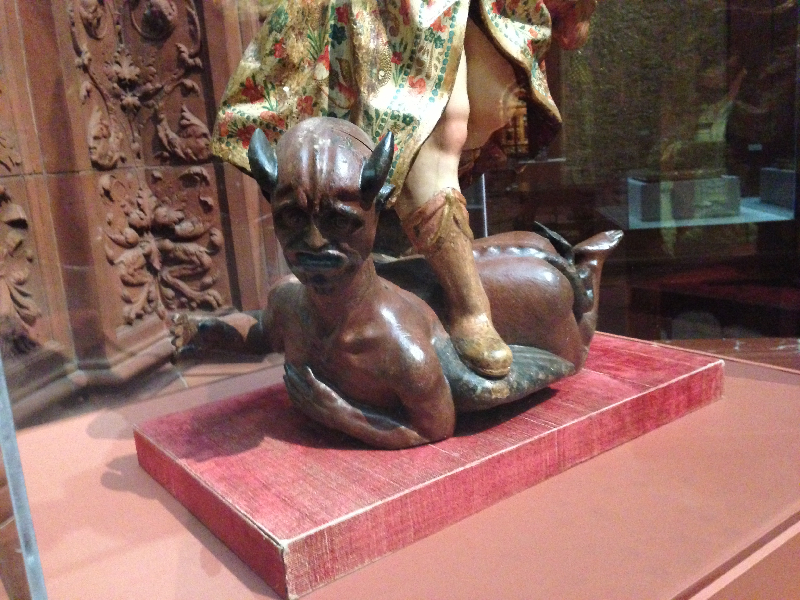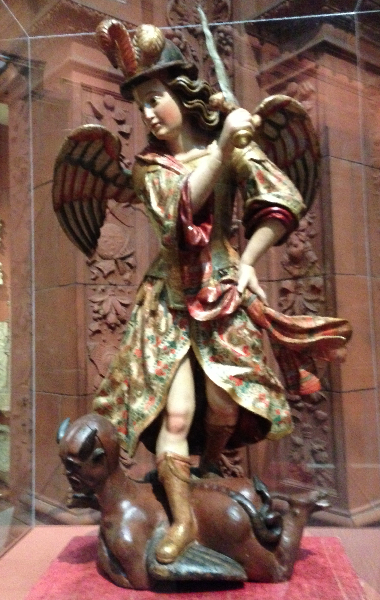On a sprarkly blue-skied, crisp day, I put on my jacket for the first time this season and ventured beyond my block for the first time post-Sandy. After taking care of a few errands in a very quiet Fed Ex, library, bank and grocery store, I decided to catch up on my museum visits.
Well that’s certainly where all the people were. The Guggenheim apparently has a blockbuster on its ramps with the Picasso Black and White show. As you know, I’m not a huge Picasso fan. Not only do I find his work cool and calculated, qualities which don’t attract me in any artist, I don’t like his sexist biography.
And this show has a bit of the slap dash about it. Not all works are equally good, and there’s just too many of them, a Guggenheim disease, diffusing the overall effect. One thing though, the works show off the Guggenheim’s architecture beautifully, which I hope you understand isn’t a compliment about the art.
I did walk away with one surprise–a small side room of Picasso’s sculptures, which were hidden away in his studio. Such is the price of fame that objects he never wanted in public now are featured in a major museum exhibition in a room of their own. But they were a bit of a revelation. I found them to be the most approachable works in the show. The monumental heads of two important women in his life reveal a relational quality between Picasso and his mistresses, missing for me when he dices them into cubist bits.
Much more fun was the Richard Artschwager show at the Whitney. While Wade Guyton at the Whitney has gotten all the press (a retrospective for a man in his 30s , who produces blah minimalist work that h e prints on a large printer, Is rather ridiculous). Artschwager works with non-traditional materials, often harkening back to an old trick-the-eye tradition. Several galleries featured his black and white work–yes, it’s one theme for the day–which fools the eye into thinking the depicted interiors are photographs.
e prints on a large printer, Is rather ridiculous). Artschwager works with non-traditional materials, often harkening back to an old trick-the-eye tradition. Several galleries featured his black and white work–yes, it’s one theme for the day–which fools the eye into thinking the depicted interiors are photographs.
This free hanging exclamation point from 2008, made out of plastic bristles painted with latex, is a wonderfully colorful relief after all that monochrome, as is the diner booth, my favorite work in the show. It’s made from Formica and green, rubberized hair–yeah, really. The yuck factor is part of what he’s going for, but in the gallery, it’s just fun. I heard three women debating whether they would fit in it (they wouldn’t; it’s clearly child sized). For me, it’s the show stopper. Other galleries feature his furniture as well, some coming with the invitation to sit.
I’m so glad I saw this show before going to the Met for the new Roentgen Brothers Rococo furniture exhibit. They make Artschwager look like an amateur.
Where did they get the idea to have hidden drawers that open not only one, but two or three different ways? With the “harlequin action,” pieces move up and down on the so-named Harlequin table or desk. Where the harlequin elements go in the down position, I can’t tell you.
The exhibit has several videos that show all the ways the pieces open and work. Remarkable. The wall text also demonstrates how marquetry is done. One writing desk uses 14 different woods in the intricate inlaid patterns of musical notations and instruments, art easels and paint brushes, plus patterning. Watch this video to see the hidden reliquary and the easel and mirror that emerge from seemingly nowhere.
Other pieces had complete, inlaid Neo-Classical or Chinoiserie scenes, modeled on preparatory paintings, also in the exhibit. Really, these pieces are unlike anything I’ve seen anywhere, including at Winterthur, that repository of every kind of American furniture. Check out this inlaid scene and how the piece works. Wowza!
I also liked the game table that covered all the bases. It could be opened one way to play backgammon, another for chess or checkers, and yet a different way for cards. Then it folds up, compact, so we can just push it against the wall until our next evening’s entertainments.
My favorite label text: “restrained Rococo.” Well, I don’t think these works are terribly restrained, but I admit to not being a Rococo furniture expert.
My favorite piece, from the whole day, the automaton of Queen Marie Antoinette playing the clavichord per the object label, and the dulcimer in this video, which shows her playing and how the automaton works. Any musicians want to clear up this instrument conundrum?
Every piece made me smile and sigh and wonder. My eye got tricked, my mind got full of fancy. A perfect post-Sandy tonic.
 n museum, a history of industrial Waterbury, and an art museum. I went for the Connecticut WPA (Works Progress Administration) exhibit. The Federal Arts Program that ran the WPA had a goal of educating the public regarding American art and cultural history. I was educated by the chance to meet new artists from one of my favorite periods of American art–the 1930s. There were the American scene painters, the urban realists, and the painters of Connecticut beaches, farms, and factories. There were women, as well as men. And it was good.
n museum, a history of industrial Waterbury, and an art museum. I went for the Connecticut WPA (Works Progress Administration) exhibit. The Federal Arts Program that ran the WPA had a goal of educating the public regarding American art and cultural history. I was educated by the chance to meet new artists from one of my favorite periods of American art–the 1930s. There were the American scene painters, the urban realists, and the painters of Connecticut beaches, farms, and factories. There were women, as well as men. And it was good. While surrounded by displays of buttons from around the world, as well as those made in Waterbury, I thought about my grandmother Nettie who saved buttons in a jar. She was a seamstress to my grandfather Bernard’s tailor. My mother said Nettie made all her clothes and that they were beauties. Sadly, none have survived. But my mother did keep a jar of Nettie’s buttons. Closing up my parents’ house, I had to throw them away because when I opened the jar, they stank. A shame, because like the buttons in the museum, you don’t see anything like them now.
While surrounded by displays of buttons from around the world, as well as those made in Waterbury, I thought about my grandmother Nettie who saved buttons in a jar. She was a seamstress to my grandfather Bernard’s tailor. My mother said Nettie made all her clothes and that they were beauties. Sadly, none have survived. But my mother did keep a jar of Nettie’s buttons. Closing up my parents’ house, I had to throw them away because when I opened the jar, they stank. A shame, because like the buttons in the museum, you don’t see anything like them now.
